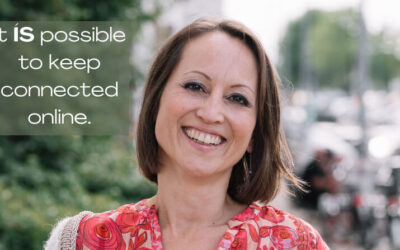Changing or adapting the culture is of interest to me because it is all about changing people and their behavior. Questions that immediately come to mind are for example. Why do we want to change the current culture? And what exactly? And where to start?
Why is culture change so difficult?
When I am talking to people in an organization about their culture, almost everyone acknowledges that he or she is also part of that culture. People describe themselves in metaphors such as a “green” or “yellow” heart or use a corruption of their company name, so they identify themselves with their company. I love that. And if almost everyone agrees that the culture is shaped by every individual; why is it so difficult to change?
Identity
Because it is about the identity of an organization and the identity of the individual. And that is at a higher level than just the behavior or the environment. And both must be in balance with each other. Identity is about who you think you are, what you believe about yourself. And that’s more than what you do. So, if you want the culture to change, the easiest way to start with is the individual, that is, with yourself.
A practical and insightful model
During my NLP training course, I came across the identity matrix again. A model that I unconsciously already use a lot. I would like to share this model with you. This model comes from NLP (Neuro-Linguistic Programming). Practical and insightful, and with 6 simple questions easy to follow for everyone. But only if you are willing to first take a critical look at yourself. In particular, your own identity and beliefs, because that is where it starts after all. Let me help you with that by explaining how this model works and how you can apply it yourself.
Identity Matrix
This “identity matrix” is a way to gain insight into what you believe about yourself, your core beliefs. Because these beliefs affect the way you see and express yourself. In the matrix, you compare these beliefs with what you do and do not want to be. The result of this gives you some powerful clues about your own identity and values and also gives insight into any limiting beliefs you might have.
How useful and beautiful would it be if you had more insight into this? So, you better understand yourself and make better choices for yourself? And, if you have a good insight into what you believe about yourself. Take a look at what you believe about the organization you belong to. And see what similarities or differences you can find, so that you know where the problem is or at what level, change is possible or necessary.
So, what about you?
To find out how that works for you, answer the following 6 questions. First about yourself and after that about the organization you belong to. Compare the answers and discover the similarities or differences.
- What is something you want to be and believe you always will be (your CORE)?
- What is something you want to be and believe you could become (your POTENTIAL)?
- What is something you want to be but believe you will never be (your CONSTRAINT)?
- What is something you don’t want to be and believe you never will be (your LIMIT)?
- What is something you don’t want to be but are afraid you could become (your WEAKNESS)?
- What is something you don’t want to be but believe you always will be (your SHADOW)?
Bonus:
For the creative minds among us, use symbols, drawings, or metaphors. And make a nice story of your answers, in which you return all 6 aspects.
Cultural change starts with you
So, if you would like to change the culture, it starts with you. Because everyone is part of the culture. By answering just 6 questions, you can already take the first step today. Go and explore!






0 Comments